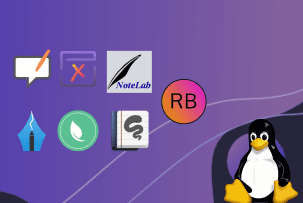NGINX Package Comparison
20:13, 08.05.2024
Overview of NGINX Packages
Nginx is a popular high-performance web server that is known for its simple setup, easy configuration, multitude of features, and reliability. Nginx is of an open-source nature and can serve for reverse proxying, caching, load balancing, and media streaming.
The software being versatile as it is able to expand its functionality through different packages, which are available in default Ubuntu APT repositories.
And in this article, we’re going to cover just that.
Various Iterations of nginx
Initially, Nginx came in the form of a unified system, meaning that any modifications made to one component can affect the whole system. The concept of packages wasn’t at play yet.
However, later, when users expressed that they wanted more diversity implemented in Nginx, different users called for different needs to be met. That’s when the packages first appeared.
Though packages might be different, they all go down to the base version of Nginx, which can now be adapted to diverse operation requirements.
Nginx packages are divided into light, core, full, extras, and naxsi versions, and together they form a solution suitable for every need. The difference lies in the modules and features included in every package.
At the end of the day every package is based on the foundational version of Nginx, so, based on our experience, it is safe to try one package and maybe switch to another without any technical issues if the needs or requirements call for it.
Now, let’s dive deeper into every package.
“Light” package
Nginx-light is named this way because it contains a lightweight version of Nginx that can work with minimal resources. It offers simple setups that don’t need a multitude of modules to be conducted, like HTTP server capabilities.
Nginx-Light package indeed misses out on many modules other packages support like HTTP rewrite module or gzip.
The nginx-Light package can be found in Ubuntu’s Universe repository.
“Core” package
Nginx’s “Core” package offers more features: for example, you can perform a minimal but still installation of the Nginx web server. This package is sort of a starting point for an operation server. It won’t have extra functionality provided by modules in the other packages, but it still maintains a level of customization, thanks to which you can install some modules.
Now, the modules that the Nginx-Core package has include basic HTTP features like HTTP/2 support, SSL support, and some of the reverse proxy features. More extensive modules like geo-mapping, Lua scripting, and streaming media support are not available with the “Core” package.
You can get Nginx-Core from the official Ubuntu repositories, or through package management tools.
“Full” package
The nginx-Full package provides the necessary functionality to carry out operations up until completion. It is suitable for resource-demanding tasks mostly.
It has almost all modules from the original Nginx source such as full reverse proxy capabilities, extended HTTP modules, WebSocket support, and others.
You can get the Nginx-Full package at Ubuntu’s Universe repository.
“Extras” package
Nginx-Extras is the most abundant package in terms of features. It includes the necessary tools for performing deployments that require a wide range of functionality.
The “Extras” package includes the whole Nginx-Full package and additional modules like geo-mapping, various encryption algorithms, Lua support, etc.
However, Nginx-Extra is not the package that includes “everything” in terms of extra modules. If a user has a specific, uncommon need, there’s a probability the Nginx-Extras won’t cover it. Sometimes, it is necessary to turn to an Nginx source for additional features.
Nginx-Extra can be found on the official Nginx website or Ubuntu’s Universe repository.
“Naxsi” package
Nginx-Naxsi is the most extensive Nginx package you can get. It includes various security modules and functions like HTTP features.
The downside of this package is that from September 30, 2023, it won’t receive any security updates. From this perspective, we don’t recommend using Nginx-Naxsi for new deployments.
For users dealing with web applications, we recommend opting for a supported solution in terms of updates.
Evaluation of Resource Usage and Practical Applications
When we talk about choosing the right package for you, we should also take into account the resource usage and the range of applications we need from our web server.
Nginx is associated with robust performance, and low memory usage, as well as the ability to handle multiple connections simultaneously all the while using minimum resources. The resource efficiency makes Nginx a go-to option for many users, as the other solutions are associated with resource-consuming functionality. So, let’s see how each Nginx package performs in terms of resource efficacy.
“Light” package
Nginx-Light is the right choice for those who have limited resource capacity or need to set up a functionally simple web server. For example, it works well with containerized environments like Docker, where the simpler is, in fact, the better or with balancing the load associated with different tasks.
If we have limited CPU capacity and memory, and want to deploy an application for IoT devices for example, using Nginx-Light would be the most reasonable option. It’ll provide enough functionality to carry out simple tasks without overstretching the resources.
“Core” package
Nginx-Core does not come with a big set of modules, but it doesn’t make it lightweight. With the “Core” package it’s possible to set up a functional and adaptable web server with the modules that the “Core” package comes with. This way one has just enough to create an operational and high-performance web server and to enhance it with flexibility features.
Nginx-Core is more than enough for static websites, simple web applications, reverse proxy configurations — anything that doesn’t require extra features. It is also good for systems that are designed for manual installation of needed modules. This way one can install the features they need without unnecessarily overbearing the system.
The “Core” package is lightweight enough (compared to other packages) and can offer basic extensions in the functionality of a web application.
“Full” package
Nginx-Full is more resource-demanding than the “Core” package because of the set of modules that comes with it. However, if modules are not applied or used, the system won’t experience any additional load.
If considered carefully, the “Full” package can be a great option for when resources a limited, but a virsitile functionality is needed. More complex web applications that require SSL features, proxying, and caching options, can be built with the Nginx-Full package. And if we want to have a basic web server we don’t need to worry about the “Full” would be just the right fit.
With Nginx-Full, you can very well build an e-commerce website with multiple landing pages, user profiles, and everything. Ultimately, the “Full” packages can cover all of the basic needs an application has.
“Extras” package
Nginx-Extras is the most resource-demanding among all packages. Since it can support third-party modules, balancing the CPU load and memory consumption can be tricky.
The “Extras” packages are best used for systems that don’t have limitations in terms of resource capacity, but there’s a need for extensive computing possibilities. It provides modules that aren’t available in other packages like more complex authentication protocols and media streaming capabilities.
If we were to think of the best use-case scenario for Nginx-Extras, it would be an enterprise-level organization using the package to cover additional functional requirements. The specialized features that the “Extras” package has is more suited to cover the diverse needs of the company’s services.
“Naxsi” package
Nginx-Naxsi is characterized by advanced security features, therefore it is pretty resource-demanding. The obvious drawback of this package is its discontinued security support, the support of a feature that made it stand out.
“Naxsi” packages were originally designed for applications that need an extra layer of security. However, now that the package is outdated, the security it provides is no longer viable, since no updates mean a higher risk of compromised security. You can use it, but with additional means to protect vulnerabilities the package doesn’t cover anymore.
Ultimately, the choice of the Nginx package completely depends on the applications’ needs, available resources, and necessary features.
Considerations for Module Customization
Predefined packages and modules are not the only way to utilize Nginx; you can also go into module customization. If users have specific needs or applications with specific requirements, module customization can be a better-suited option.
Nginx allows the integration of custom modules, which ultimately help tailor a web server to meet the technical requirements. For example, you can start with the “Light” package and add customized modules.
Nginx is pretty flexible since it includes customized modules. Even though it requires a level of expertise, we get our scope of control and personalization.
Insights for Efficient Package Management
Choosing the right Nginx package is important no doubt, but it’s also necessary to know how to manage it in the long run.
First things first, regular updates are crucial for proper maintenance of the package.
Using configuration management tools can also help in the automation of server configurations, which can save time, and minimize human error.
If we choose the right package and learn how to manage it correctly, we can significantly improve the security and performance of our server.
Concluding Remarks
The choice of a Nginx package should be a decision that one approaches responsibly. The general package comparison is great, but first, you need to take into account your needs, technical requirements, potential use cases, and scalability options. You should base your choice on what exactly you want your server to do, and what kind of performance you need from it.


